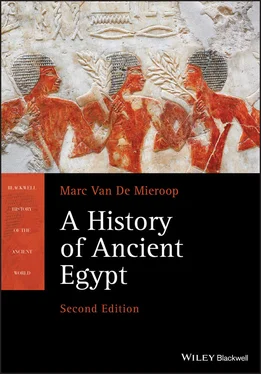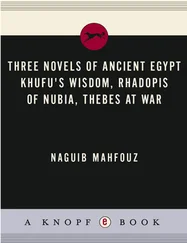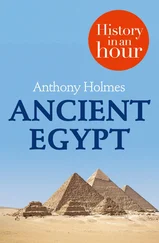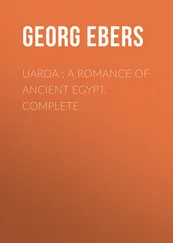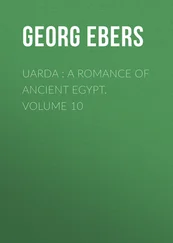Figure 3.3Abusir papyrus. British Museum, London, EA10735,10 H 20.5 cm. Source: The Trustees of the British Museum / Art Resource
Figure 3.4This wooden panel, 115 cm high, is one of six found at Saqqara in the mastaba tomb of Hesira, an official of King Djoser. It depicts Hesira with the tools of a scribe hanging from his right shoulder. The hieroglyphs on top provide a list of his titles. Those in front of him list offerings. Egyptian Museum, Cairo, Egypt CG 1427. Source: Werner Forman / Art Resource
Figure 3.5In the valley temple of King Menkaura’s pyramid at Giza were excavated four intact sculptures that represent the king with the goddess Hathor and a nome deity of Egypt (in this example the Hu nome of Upper Egypt). The works are carved from graywacke, a type of sandstone, and are about 1 m tall. Egyptian Museum, Cairo, Egypt JE 46499. Source: Werner Forman / Art Resource
Figure 3.6This sculpture of Khafra, carved from diorite stone from the south of Egypt, was found in the king’s valley temple at Giza. It shows the god Horus in the shape of a falcon embracing the king’s head as a symbol of the intimate connection between the living king and that god. The complete statue, showing the king seated on a throne, is 168 cm high. Egyptian Museum, Cairo, Egypt JE 10062. Source: bpk Bildagentur / Art Resource
Figure 3.7In the mortuary temple of Sahura at Abusir appear reliefs carved in limestone of the king’s military campaigns in Asia and Libya with images of the prisoners and other booty he collected there. This is a detail of some of the exotic animals he brought back from Syria, namely three bears. They are tethered to the ground and a jar stands between them. Aegyptisches Museum, Staatliche Museen, Berlin. Source: Erich Lessing / Art Resource
Figure 4.1With the decentralization of power in the First Intermediate Period, provincial lords were able to construct monumental tombs throughout Egypt, following local customs with different architectural layouts. One such type was the so‐called saff tomb from the region of Thebes, which consists of a set of chambers carved in the rock with a large courtyard lined with door‐like openings in the back creating the impression of a pillared façade. These tombs were also popular among the early kings of the 11th dynasty.
Figure 4.2The pyramid at Saqqara of the last ruler of the 5th dynasty, King Unas, is the earliest monument from which the funerary texts we call Pyramid Texts are known. These are spells that were carved into the walls of the burial chamber, intended to help the dead king to reach his proper place in the hereafter. Source: Werner Forman / Art Resource
Figure 4.3Starting in First Intermediate Period, non‐royals had mortuary texts written out on their coffins to guide them to a paradise‐like destination with the god Osiris. These could include maps that indicated the dangers they would encounter on the journey there. This image shows part the Book of the Two Ways , painted onto the bottom of the 12th‐dynasty coffin of Gua, chief physician of Djehutihotep, great overlord of the Hare nome. Egyptian Museum, Cairo, Location: 39. Source: HIP / Art Resource
Figure 4.4Because Pepy II became king as a young boy, his mother acted initially as his regent, and this 40‐cm‐high alabaster statue depicts their relationship at that time. Although he is a child sitting on his mother’s lap, Pepy is represented as an adult king with a royal headdress in miniature size. Brooklyn Museum 33.119. Source: Charles Edwin Wilbour Fund / Bridgeman Images
Figure 4.5This very nicely carved hieroglyphic text, on limestone (the segment shown here measures 193 by 50 cm), was set up in honor of a man called Mereri who worked as priest during the 9th dynasty or somewhat later. He claims to have provided the people with food and clothing, and to have judged their court cases fairly. Source: Metropolitan Museum of Art Gift of Egypt Exploration Fund, 1898, 98.4.2a–c
Figure 4.6This limestone stele, which measures 37 by 45 cm and is said to have been found in a village just south of Thebes, was made for a Nubian soldier called Nenu. Both the hieroglyphic text and some elements of his dress, like the wide leather sash, identify him as Nubian. His wife wears a fully Egyptian outfit, however. The somewhat awkward style of the representation is characteristic for the First Intermediate Period. Museum of Fine Arts, Boston, Emily Esther Sears Fund. Source: Bridgeman Images
Figure 4.7With the creation of a new dynasty in Thebes, artists there started to produce very fine sculptures representing the kings in their roles as intermediaries with the gods. This limestone stele, which measures 44.5 by 46 cm, was probably set up on behalf of Wahankh Intef II in the courtyard of his tomb and shows him offering milk to the god Ra and beer to the goddess Hathor. The hieroglyphic text contains hymns to both gods. Metropolitan Museum of Art 13.182.3. Source: Rogers Fund 1913
Figure 5.1This 46‐cm‐high statue carved from graywacke stone shows the head of King Amenemhat III wearing the white crown of Upper Egypt. The sculptor emphasized the contrast between the soft lines of the king’s facial features and the smooth surface of the high crown. The head’s nose and ears seem to have been ritually destroyed at an unknown later date. Ny Carlsberg Glyptotek, Copenhagen. Source: Werner Forman / Art Resource
Figure 5.2In the Middle Kingdom, provincial governors were able to pass their offices on to their sons and to commission tombs decorated with scenes that showed their activities in their official business. This image is a 19th‐century AD copy of a fresco painting from the tomb of governor Khnumhotep II at Beni Hasan, and the detail shows desert people bringing him gifts as if he conducted foreign policy on his own. Kunsthistorisches Museum, Vienna, Austria. Source: Erich Lessing / Art Resource
Figure 5.3Senusret I started the development of the Amun temple at Karnak in Thebes and erected the “white chapel,” a small limestone pavilion to celebrate his sed‐ festival. The chapel was dismantled in the 18th dynasty and its stones reused for the construction of the 3rd pylon. On its walls was carved a list of the nomes of Egypt in vertical columns, which gave each nome’s name, its chief town and patron deity, the distance from north to south, and a number of cattle. The chapel was reconstructed in modern times. Source: Erich Lessing / Art Resource
Figure 5.4The find of a collection of letters and accounts belonging to a private landowner gives us some insight on the activities on farms throughout Egyptian history. The letter shown here, written on papyrus in hieratic script, contains the landowner Heqanakht’s orders to his family members whom he left behind when going on a business trip. He is obsessed with details and seemingly responds to their earlier complaints with a statement that life is hard. The Metropolitan Museum of Art, New York 22.3.517. Source: Rogers Fund and Edward S. Harkness Gift, 1922
Figure 5.5This 18‐cm‐high wooden statuette is an execration figurine, that is, an object intended to control enemies through magical means. Their names were written on often very roughly shaped human figures in wood or clay, which had no arms or were tied up to make sure the owner of the object controlled them. Execration Texts, some of them quite long, could also appear on bowls that could be ritually smashed. Musée du Louvre, Paris. Source: RMN‐Grand Palais / Art Resource
Figure 5.6Middle Kingdom Egypt constructed multiple fortresses along the 2nd cataract, with moats and massive walls, and barracks, magazines, and other buildings laid out on a gridiron pattern in the interior. The image here is a 3‐D reconstruction of the 12th‐dynasty fort at Buhen, whose outer ramparts measured some 450 by 200 m. © 2010 Institute for the Visualization of History, Inc.
Читать дальше
